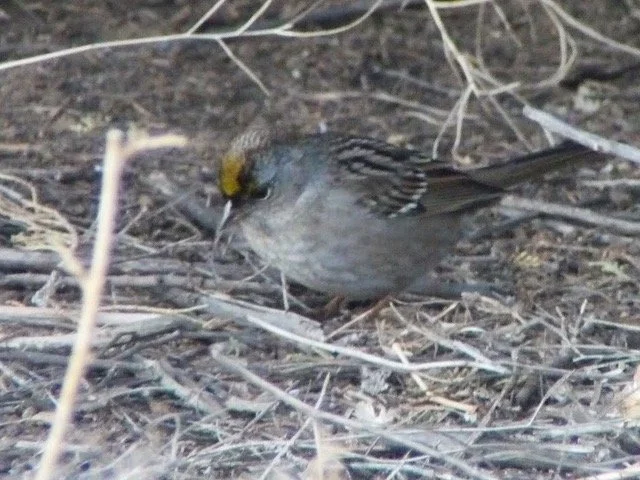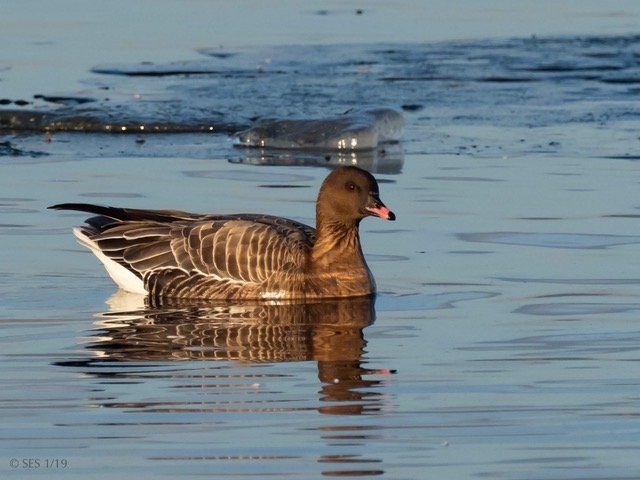November Nature Almanac: Defective compass may send disoriented migrants our way
By Ruth Carol Cushman, Scott Severs, and Stephen R. Jones
November 2021
In the autumn and early winter of 2018 local birders became excited by birds that should not have been here. A Fork-tailed Flycatcher, an extremely rare visitor to North America from south of the border, was at Prince Lake #2 in October and stayed for several days. A Vermilion Flycatcher, rarely seen in Colorado, stayed around Cottonwood Marsh for several months. A Pink-footed Goose and a Barnacle Goose at Milavek Reservoir in Frederick were new state records. A Ruby-throated Hummingbird, a mostly eastern and southern species, hung out for a few days at a local feeder. A Tropical Kingbird foraged in the Denver area for at least nine days.
Fork-tailed Flycatchers are infrequently seen in North America and are usually mixed up migrants from southern South America. Photo by Glenn Cushman.
Hurricane winds probably helped push these out-of-place birds north that year, but another cause may be a phenomenon called “reverse migration” that happens when a bird flies in the opposite direction from their usual route. Sometimes “wrong-way Corrigans”* fly north instead of south, sometimes west instead of east, and sometimes in a random direction.
It’s not a well-understood phenomenon, though researchers have found that the disoriented birds suffer from a lack of stored fat and an insufficient number of red blood cells. Could there be a glitch in the genetic programming? Or a problem in learning the route from the parents? (Learned migration only occurs in a few species). Can these pioneering birds possibly start a new population with a different migration route? Some years ago, a Golden-crowned Sparrow found its way to a hedgerow at North Teller Lake trailhead. It faithfully returned for six years but never brought others along to start a new trend.
This Golden-crowned Sparrow, normally a resident of California and Oregon, spent six winters in Boulder County. Photo by Scott Severs.
There are more questions than answers, so there might be a dissertation in here somewhere.
Wind Patterns
Winds are such an important factor in migration patterns that we’re lucky to have meteorologist Bryan Guarente here in Boulder. Bryan posts alerts to COBirds when the winds converge and funnel the birds our way. He spoke during Boulder County Audubon’s October program and suggested the website earth.nullschool.net to check real-time wind patterns yourself.
Vermilion Flycatchers are seldom seen in Boulder County. Photo by Scott Severs.
City Lights
A different type of disorientation is caused by our city lights. We can no longer see the Milky Way in Boulder because of light pollution, and nocturnal migrating birds no longer have a clear view of the stars that help guide them. Instead, bright lights lure them into cities where there is less native food and cover from predators and where they are more likely to collide with buildings and vehicles.
“Is Bird Migration Getting More Dangerous?” (Living Bird, Spring 2021) cited the work of Kyle Horton, head of the AeroEco Lab at Colorado State University. When he was a researcher at Cornell University, Horton found that over a million songbirds were drawn into New York City by the Tribute in Light memorial to 9/11 victims. Light beams shooting high into the sky caused confused warblers, thrushes, tanagers and more to circle pointlessly for hours, wasting precious energy. When these lights were turned off for just 20 to 30 minutes, the birds were able to disperse and continue southward
The National Audubon Society promotes its Lights Out program to convince building owners to turn off excess lighting during spring and fall migration. You can also find Colorado specific information with Lights Out Colorado .
*Aviator Douglas Corrigan flew across the Atlantic to Ireland instead of to California in 1938. Claiming a navigational error caused by poor atmospheric conditions, he never admitted the unauthorized flight was intentional.
This Pink-footed Goose was a new state record for Colorado. Photo by Scott Severs.
Other November Events
Boxelder bugs and other benign insects, as well as spiders, seek refuge in our cozy homes.
Easter daisies may begin to bloom on south-facing shales in Boulder Mountain Park. Watch for other early bloomers as our climate warms.
Mule deer spar and mate. Unlike elk, males do not maintain harems but instead tend one or two does.
Ducks decked out in nuptial plumage begin courting; swans and Common Loons appear on lakes; and Snow Geese may join large flocks of Canada and Cackling Geese.




